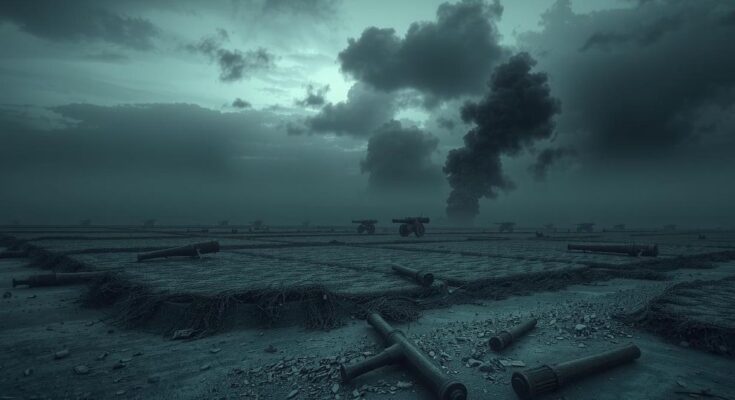This article examines the deadliest conflicts in history through total and annual death tolls, highlighting World War II’s staggering impact. While World War I follows in casualties, shorter conflicts like the Bangladesh Liberation War show that intensity can outweigh duration regarding death rates. Understanding these patterns in warfare is essential for recognizing historical lessons and promoting conflict prevention strategies.
Throughout history, warfare has significantly influenced national boundaries, governance, and the human condition. Though total casualty counts provide a common metric for understanding conflict scale, examining annual death tolls presents an alternative perspective on the severity and impact of wars.
World War II stands as the deadliest conflict, with approximately 85 million fatalities between 1939 and 1945, averaging about 14.17 million deaths annually. This global conflict, which spanned multiple continents, included extensive military confrontations and egregious atrocities like the Holocaust, culminating in unparalleled human suffering and geopolitical shifts.
Following World War II, World War I, dubbed the Great War, ranks second in terms of annual death toll, with around 15 million deaths from 1914 to 1918, translating to 3.75 million annual fatalities. The introduction of trench warfare and chemical weapons during this four-year period resulted in dire consequences, facilitating the collapse of empires and setting the stage for subsequent global tensions.
Moreover, the 1971 Bangladesh Liberation War illustrates that shorter conflicts can achieve drastic death tolls. This one-year war led to roughly 3 million fatalities through extreme violence aimed at independence, marking it as one of the most catastrophic conflicts in modern history, showcasing that intensity can sometimes surpass duration in its deadly effect.
Other notable conflicts, including the Chinese Civil War, the Napoleonic Wars, and the Korean War, while presenting significant casualty figures, had comparatively lower annual death tolls. This phenomenon suggests that while protracted wars accumulate higher overall death counts, shorter, intense battles can be equally devastating within compressed timeframes.
By analyzing wars through the lens of annual death tolls, one can glean insights into the pace and magnitude of devastation. The juxtaposition of lengthy wars, which distribute their toll over time, with concentrated conflicts like the Bangladesh Liberation War, underscores diverse patterns in warfare and its aftermath. This comprehensive analysis aids historians and policymakers in understanding the implications of armed conflict and the necessity for proactive diplomatic solutions.
In conclusion, juxtaposing total casualties against annual death tolls reveals layered narratives of human suffering instigated by war. While cumulative death totals illustrate extensive damage over time, the intensity of concentrated conflicts signifies the urgent need for conflict resolution. These statistics implore the international community to prioritize diplomatic endeavors and preventive measures to safeguard against the repetition of historical catastrophes.
In summary, evaluating warfare through total casualties and annual death tolls enriches our understanding of its human costs. While total fatalities depict extensive devastation over prolonged periods, annual rates highlight intense suffering over limited timescales. This analysis emphasizes the importance of diplomatic efforts and proactive measures to prevent future conflicts, recognizing the tragic lessons of history.
Original Source: globalsouthworld.com




